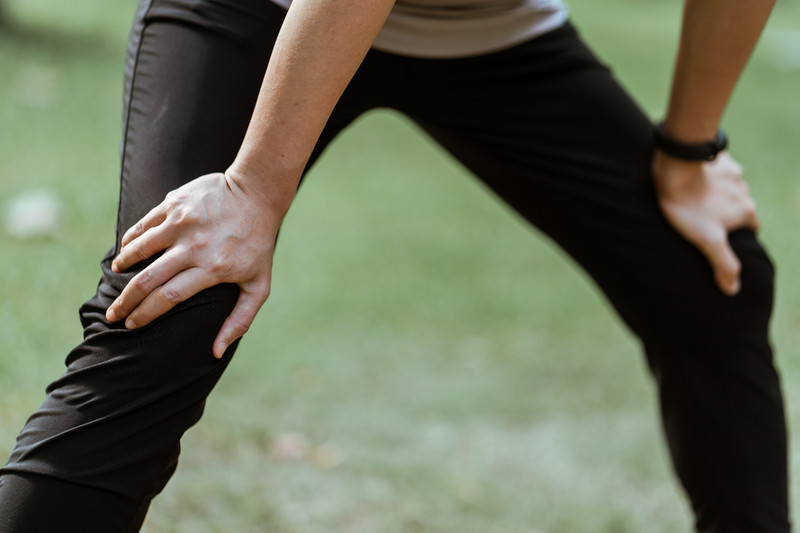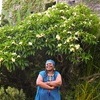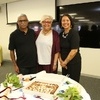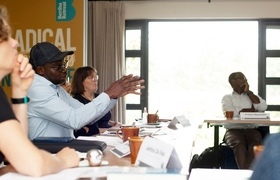The incriminating genes behind sports injuries
21 December 2022 | Story Natalie Simon. Photo Ketut Subiyanto Pexels. Read time 10 min.
It is common to see families with a strong sporting history. And in some of those families, we may also note the same sports injury recurring across family members. This, says Professor Alison September, head of the Division of Physiological Sciences in the Department of Human Biology at the University of Cape Town (UCT), points to a genetic contribution.
In a recent study, published in PLoS ONE, September and her team took a ‘dive into the genomes’ of two unrelated families that had members who suffered the same sports injury. They used a whole genome sequencing approach to identify changes in their DNA that potentially contributed to their injury risk. They also followed up with protein modelling analyses to see how these DNA sequences could affect protein function and thus the body’s ability to effectively respond to the external environment, which can make an injury more likely.
“We are increasingly finding out how our body’s response to our external environment is guided by our DNA,” says September. “There is a substantial amount of data out there showing that the heritability of ligament injuries, which is what our research focused on, is as high as 60%.”
The research team at UCT is currently leading globally in research to better understand the body’s cellular networks and pathways, including DNA and protein structures, in the field of sports injury. Their aim is to find ways to support and facilitate the healing of our connective tissue.
Identifying the genomes for knee ligament injuries
September’s research focused on injuries of the anterior cruciate ligament (ACL), which is one of the main stabilising structures of the knee. They looked at cases of ligament tearing, or ACL rupture, in two sets of twins where all four individuals had suffered the injury.
“An ACL rupture is multifactorial,” explains September. “This means that many factors contribute to the cause of the condition, including your genetics, your training load and even your gender. Women are more susceptible to this injury.”
We are increasingly finding out how our body’s response to our external environment is guided by our DNA.
It is interesting that some individuals seem to have a predisposition towards an ACL rupture, while others who play the same sports at a similar level for as many hours and years, did not suffer the injury.
“It is therefore reasonable to propose that an individual might have DNA sequences that protect them from an ACL injury or sequences that put them at particular risk of sustaining such an injury,” she says.
To identify the specific sequences that led to these injuries, the group applied a whole genome sequencing approach – a method in which an entire genome is analysed, as opposed to only a section of it – to conduct an exploration that goes beyond the research undertaken thus far on ACL injury risk.
“The genome contains the biological blueprint or set of sequences responsible for regulating how your body functions and how effectively it can respond to a changing environment,” says September.
“Imagine an endless array of sequences, some shared between those with the injury and sometimes shared with those without the injury.”
Using computer programming tools in a technique known as bioinformatics, the researchers were able to correlate these interesting DNA sequences to potential biological pathways related to ACL injuries and identify those for further investigation.
The group then went one step further and used a 3D protein modelling analysis to look at what effect these altered DNA sequences could have on the structure of proteins – and therefore their function.
Imagine an endless array of sequences, some shared between those with the injury and sometimes shared with those without the injury.
“Understanding the protein interactions is very important to understanding the genetic function,” explains September. “Our connective tissue is made up of cells, and it is within our cells that we find the DNA that makes the proteins required for the structure of our tendons and ligaments.
“Changing protein structures can alter how these proteins interact with other proteins, thereby potentially affecting complex pathways and the body’s ability to regulate responses to changes in the environment.”
What this all means
Key to this research is that sports injuries are caused by a confluence of factors. Two individuals can sustain the same impact on a joint, like the knee. But how the knee responds depends on the person’s DNA.
“It is fascinating how our tendons and ligaments are always in motion, always reacting and responding to not only the changing external environment but also the changing cellular environment,” says September.
But what does this insight mean?
September notes that this is innovative research, far from the point of diagnostic use – but the potential is there. Their research has shown the key biological networks that contribute to these injuries. With further understanding, it may be possible to identify proteins that can be developed and prescribed to facilitate healing and recovery.
This potential goes far beyond sports injuries too, stretching to occupational injuries and others.
“Although we are using a sports model, the application is far broader. If this model can help us understand key network partners within the body that promote healing, it will have a huge pharmacological effect,” says September.
Future of research
September and her team feel they have just begun to scratch the surface. They have received funding from the South African Medical Research Council (SAMRC) to further explore the DNA sequences used in this study. The team is focused on taking this research further into Africa, where there is still much to be learned and understood about African genomics.
Although we are using a sports model, the application is far broader.
“We are beginning to move into a world of personalised medicine,” says September. “This involves whole genome sequencing at the population level. We cannot just look at a few families or datasets, we need to see what is significant at the continental level so Africa can be ready to receive intervention and treatment.”
For September this is a lifelong passion, and she is excited about taking her research broader and the impact that understanding genomics in Africa can have.
“I started doing exploration in human genetics in 1994 as a research assistant,” she says. “And I am as passionate now as I was then about the potential of genetics for the future of medicine and the health and wellbeing of people.”
-
Feldmann D et al. (2022) A whole genome sequencing approach to anterior cruciate ligament rupture-a twin study in two unrelated families. PLoS One Oct 6;17(10):e0274354. DOI: 10.1371/journal.pone.0274354
 This work is licensed under a Creative Commons Attribution-NoDerivatives 4.0 International License.
This work is licensed under a Creative Commons Attribution-NoDerivatives 4.0 International License.
Please view the republishing articles page for more information.










